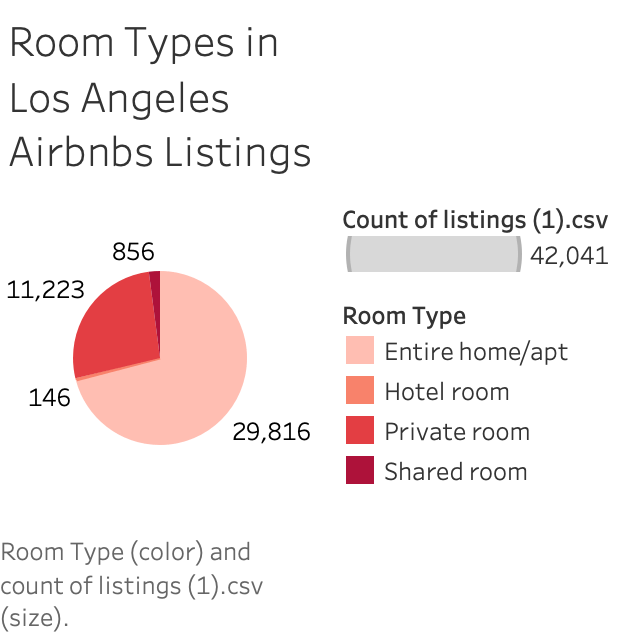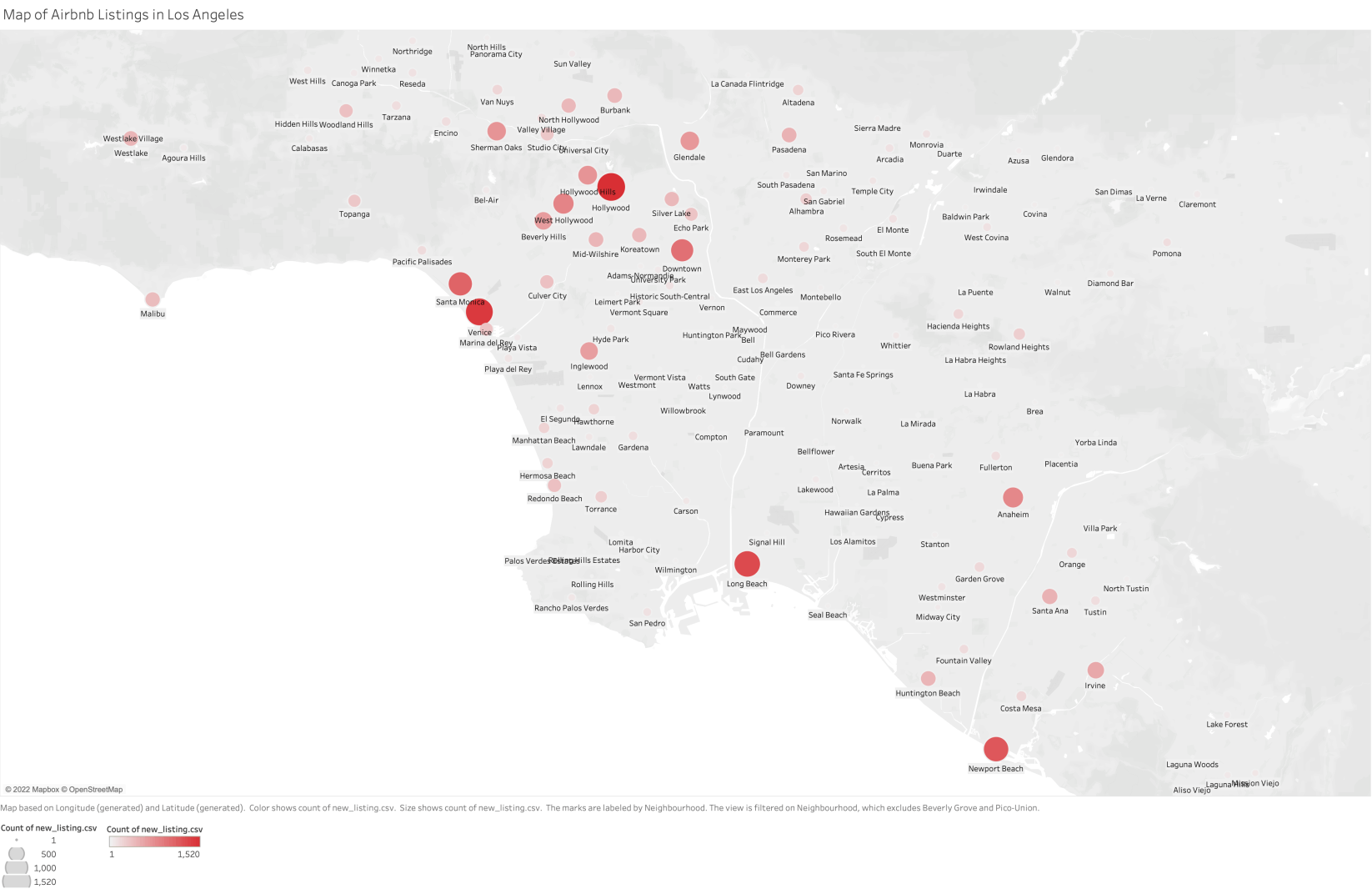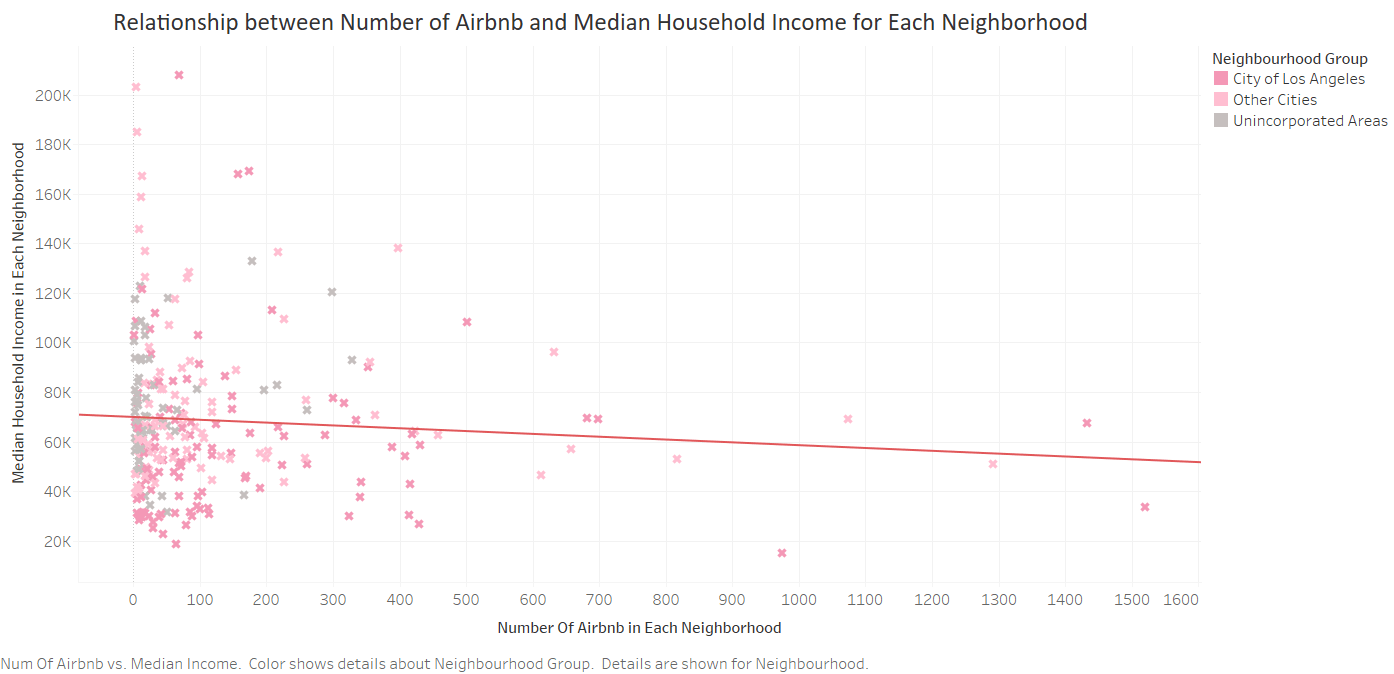1.) What neighborhoods in Los Angeles have the most listings and why?
The visualization below displays the number of Airbnb listings in each neighborhood, the neighborhood with the most listings is Hollywood, followed by Venice, Long Beach, Santa Monica, and Downtown. As we explore the reasoning behind the popularity of Airbnb in these specific areas, we look towards an article written by Max Belasco, which explains that despite Airbnb’s claim that their business model allows working families to afford their homes in an increasingly competitive and pricey market, the majority of Airbnb’s revenue within the county has been for entire home rentals that appear to be hotel-ized (Belasco 2021).
This is consistent with our visualization on the right, which shows that most Airbnbs in Los Angeles are entire homes or apartments. Belasco’s observation that most of Airbnb’s revenue comes from “hotel-ized” listings shows that Airbnb is a market competitor in the hotel industry, meaning that similar to hotels, there are more listings in areas that are tourism heavy. This would explain why areas like Hollywood, a major tourist attraction, have significantly more listings than other, more residential neighborhoods. Additionally, in an article titled “Analyzing and Predicting the Spatial Penetration of Airbnb in U.S. Cities,” the authors concluded that Airbnbs tend to populate a creative sector closer to the city center of each city regardless of population composition, size, or wealth (Quattrone et. al 2018).
Sure enough, the neighborhoods in Los Angeles with the highest number of Airbnb listings, such as Hollywood and Venice, are thriving cultural areas of the city. Overall, from our analysis of the Airbnb data and research, the neighborhoods in Los Angeles with the most Airbnb listings are those that have a high number of tourists and those that are considered creative sectors of the city.



